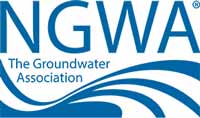Borehole geophysics is the science of recording and analyzing measurements of physical properties made in wells or test holes. Probes that measure different properties are lowered into the borehole to collect continuous or point data that is graphically displayed as a geophysical log. Multiple logs typically are collected to take advantage of their synergistic nature–much more can be learned by the analysis of a suite of logs as a group than by the analysis of the same logs individually.
Borehole geophysics is used in ground-water and environmental investigations to obtain information on well construction, rock lithology and fractures, permeability and porosity, and water quality. The geophysical logging system consists of probes, cable and drawworks, power and processing modules, and data recording units. State-of-the-art logging systems are controlled by a computer and can collect multiple logs with one pass of the probe.


Video Logging
We work with SRW and utilize dual view camera with depth capabilities over 3000 feet, to provide both a downhole view and a detailed, 360 degree continuous scan of well sidewalls to examine borehole integrity. examine the formation walls, casings, screen, gravel pack, infiltration, encrustations, deterioration, perforation blockage or other physical damage.
Hydrologists and geologists use the images to verify geophysical data such as: changes in rock type, small-scale geologic structures, rock fractures, and groundwater movement.
Well Development:
Well Development of drilled wells is necessary to maximise the yield of the well and to optimise the filter capacity of the gravel, by improving near-well permeability and stability.
- increases the rate of water movement from the aquifer into the well;
- stabilizes the aquifer to prevent sand pumping, thereby producing better quality water and increasing the service life of the pump cylinder and well
- removes organic and inorganic material which may inhibit effective well disinfection.
Methods:
- High Flow pumping
- Mechanical Surging
- Backwashing
- Bailing
- High-velocity hydraulic jetting
- Development by Surging
- Surge Block
- Compressed Air
- Well Development by Hydro-fracturing
- Inflatable or Mechanical packer
- Zone isolation hydrofracturing
Well Rehabilitation:
A well should generally receive some type of maintenance if the relative yield or specific capacity falls to or is more than 2%-5% from its new or previously tested state.
Well Rehabilitation becomes necessary if operating wells fail to provide adequate water quality or quantity as the well becomes contaminated or clogged through natural processes or due to emergencies. It involves the cleaning and disinfection of the well and sometimes the application of well development procedures.
Generally, a decrease of 25% or more in well yield indicates that rehabilitation is in order. Delaying rehabilitation procedures can significantly increase costs and in some cases make rehabilitation impossible.
Upon noticing loss of performance in your well we will inspect your well, at a minimum utilize a dual view camera, and then geophysics.
Have you noticed the below:
- Decreased pumping rate
- Decreased water level
- Decreased specific capacity
- Increased sand or sediment content in the water (cloudiness)
- Decreased total well depth
Failures Caused by:
- Reduced Yield from Incrustation or Bio-Fouling
- Physical Plugging and Sand Pumping
- Corrosion
- Pump Damage
- Declined Aquifer and Well Efficiency
Well Construction:
Dual Rotary
Dual rotary is presently being used successfully where unconsolidated formations (sand, gravel, and boulders) make it difficult to drill a cased hole using conventional drilling techniques. Although a combined percussion- rotary method penetrates rapidly in consolidated formations.
A top drive rotary head simultaneously handles a drill string equipped with a down-the-hole hammer, drag bit or rolling cone rock bit to drill inside or ahead through the casing. The lower rotary drive unit operates totally independently from the top drive rotary head. Using this drilling technique SSWD has successfully operated in locations where casing hammers and reamers have been unsuccessful.
Cable tool/percussion drilling:
Ever since the early days of water well drilling, the percussion drilling rig has played a central role. This is an all-purpose machine that can be used to penetrate sand, gravel, or hard rocks such as sandstone or limestone. Depending upon the geologic formation, this method of drilling is traditionally very slow.
Reverse Circulation:
Large diameter production wells in sand and gravel can be rapidly drilled by the reverse circulation process. In this method, the flow of drilling is reversed as compared to the conventional rotary methods. The drilling fluid used is not as heavy, lessening the problem of formation clogging. This makes well development easier and less costly. Wells up to 72 inches can be drilled by using reverse circulation.
Air hammer drilling, down hole drilling:
The bit used in this drilling method is essentially a pneumatic hammer operated at the end of the drill stem. The combined hammering and rotation of the bit results in penetration of hard rock at a rate faster than any other drilling method.
Direct Rotary
Direct rotary consists of drilling a borehole by means of a rotating bit and removing the cuttings by continuously circulating a drilling fluid (air/liquid).
Mud rotary; utilizes a drilling fluid of bentonite clay and water. The mud serves several purposes: (1) remove cuttings from the drillhole, (2) prevent collapse of the drillhole and reduce water loss, (3) suspend cuttings when drilling is stopped, (4) cool and clean the drill stem and bit, and (5) lubricate bit bearings and mud pump parts
Air rotary; larger rotary rigs have an air compressor to enable the contractor to also use air as the drilling fluid. The high velocity of the air as it exits the bit is sufficient to blow the cuttings away from the bit and carry them up to the surface where they settle out around the borehole. Air rotary is used primarily for drilling in consolidated (rock) formations.
Other Drilling Methods
Auger Drilling
Continuous-flight, spiral auger well drilling rigs are used where sand is the predominant glacial drift material. The auger method utilizes spiral augers, usually in 5 foot lengths. The auger stem is turned by a hydraulically-controlled rotary drive head.
Jetting/Hollow Rod
Jetting is a drilling method suited for the sandy areas. Jetting and hollow-rod equipment are quite similar except that drilling water is pumped with the jetting method and the direction of water flow is opposite. The jetting method involves using a high velocity stream of water to break up the formation material and wash the cuttings away.
Types of Wells
Artesian= an artesian well is any well, which encounters pressurized ground water or low temperature geothermal resource under sufficient head to rise above the elevation at which it was first encountered whether or not the fluid flows at land surface. If the fluid level stands above land surface, the well is a flowing artesian well.
Domestic= a well for use of water for homes, organization camps, public campgrounds, livestock, and for any other purpose in connection with these uses including irrigation of up to one-half acre of land
Geothermal= a well in Idaho with a bottom hole temperature of 212 degrees Fahrenheit or more from the natural heat energy of the earth,
Commerical=
Industrial=
Municipal=
Irrigation=

